
Browse an alphabetical list of photographs. These historical images portray people, places, and events before, during, and after World War II and the Holocaust.
<< Previous | Displaying results 1861-1870 of 2641 for "Photo" | Next >>
Poster: Nuremberg / Guilty! After the end of the war and the defeat of Nazi Germany, Allied occupation authorities in Germany used posters such as this one to emphasize the criminal nature of the Nazi regime.
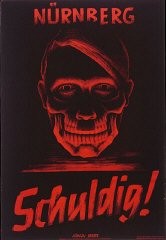
Poster promoting the Nazi monthly publication Neues Volk. Jews were not the only group excluded from the vision of the "national community." The Nazi regime also singled out people with intellectual and physical disabilities. In this poster, the caption reads: "This hereditarily ill person will cost our national community 60,000 Reichmarks over the course of his lifetime. Citizen, this is your money." This publication, put out by the Nazi Party's Race Office, emphasized the burden placed on society by…
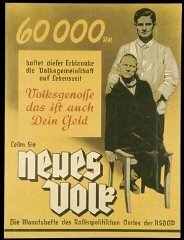
Poster: "Students/Be the Führer's propagandists." With militant appeals to nationalism, freedom, and self-sacrifice, the Nazi Party successfully recruited students disenchanted with German democracy and their current student organizations.

Poster: "We Women Are Voting Slate 2 National Socialists." German women were an important voting bloc. The Nazis made a concerted effort to appeal to women, as exemplified by this 1932 election poster. The Nazis had to repackage their messages to de-emphasize military aims. Hitler consciously modeled some Nazi propaganda appeals to German women on speeches delivered by Benito Mussolini in Fascist Italy, who also had to calm the fears of Italian war widows after World War I. Nazi propagandists attempted to…
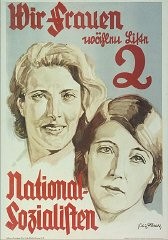
Postwar photo of a church in the village of Chelmno. Jews were kept in this building en route to the Chelmno killing center. Chelmno, Poland, June 1945.
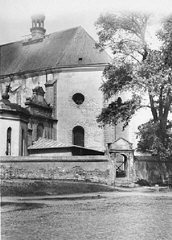
Postwar portrait of Alexander Bielski, a founding member of the Bielski partisan group. 1945–48.

Postwar portrait of Piotr Kolenda. He was a landowner from Nowogrodek who knew both the Dzienciolski and Bielski families before the war. During the war he helped hide the women before they could safely go to the forest and continued to assist members of the Bielski group while they were in the forest.
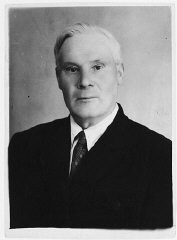
A Jewish man attempts to make a living by playing music on a gramophone, which he wheels around in an old baby carriage. Warsaw ghetto, Poland, wartime.
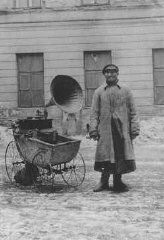
Piles of prayer shawls that belonged to Jewish victims, found after the liberation of the Auschwitz camp. Poland, after January 1945.
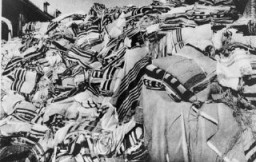
Pre-emigration training: young Jews in a cooking class in the Theodor Herzl School sponsored by the Jewish community. Berlin, Germany, between 1930 and 1939.
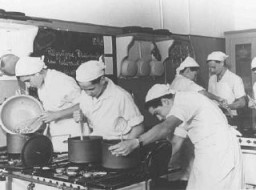
We would like to thank Crown Family Philanthropies, Abe and Ida Cooper Foundation, the Claims Conference, EVZ, and BMF for supporting the ongoing work to create content and resources for the Holocaust Encyclopedia. View the list of donor acknowledgement.